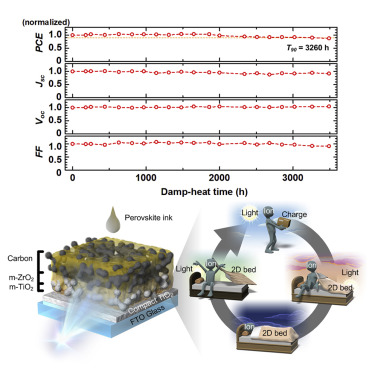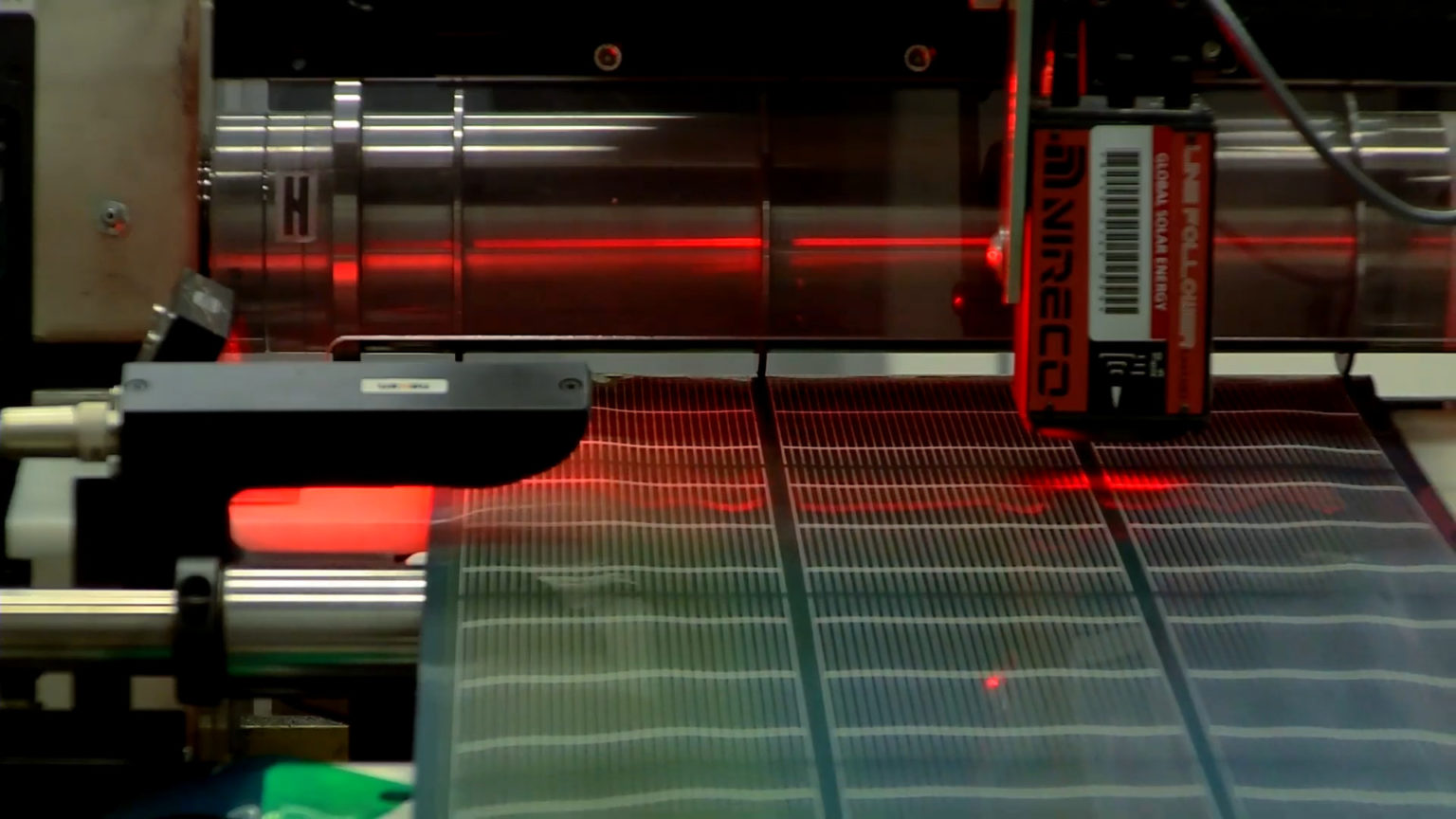

兵庫県立大学:20年の屋外耐久性を獲得:ペロブスカイト(動画):
University of Hyogo: 20 years of outdoor durability: Perovskite:
兵库県立大学:20 年的户外耐久性:钙钛矿
ー炭素電極を備えたペロブスカイト太陽電池ー
兵庫県立大学
紀州技研工業研究グループが「世界最長となる屋外環境20年相当の寿命を得ること」に成功した。
「ペロブスカイト太陽電池の実用化を、大きく後押しする成果だ」という。
今回の研究:
戦略的国際共同研究プログラム(SICORP)によるもの。
- スイスのソラロニクス社、
- ドイツのフラウンホーファー研究所との、
- 共同研究チームによる成果。
研究の詳細:
2021年11月13日「Cell Reports Physical Science」で公開した。
次世代の太陽光パネル:
「炭素電極を備えたペロブスカイト太陽電池の性能」が、「光照射により回復するメカニズムを活用した」もの。
ペロブスカイト太陽電池とは:
ペロブスカイト太陽電池は、次世代の太陽光パネルとして期待される。
シリコン太陽電池と比較:
- 現在主流のシリコン系の太陽電池と比較し、
- 高変換効率のポテンシャルと、
- 低製造コストを期待できる。
シリコン系太陽電池に対して、
- 300分の1の薄膜で、
- 発電できることから、
- 軽量化も容易に出来る。
太陽電池の新用途拡大への期待もある。
研究グループの開発内容:
炭素電極を備えるペロブスカイト太陽電池。
多孔質構造の酸化チタン、
酸化ジルコニウム、
カーボン電極の3層を、印刷で形成した。
- ペロブスカイトインクを
- 下部まで染み込ませ、加熱処理により、
- ペロブスカイト層を結晶化させ、
太陽電池として機能させる。
導電性値を改善:
電池に太陽光を照射すると、
- 太陽電池の出力パラメーターである、
- 開放電圧と曲線因子(導電性に関係する特性値)が改善する。
発電出力劣化を抑制:
耐久性検証試験で「発電出力が初期値の90%にまで、劣化するのに掛かった時間」で、
3260時間を記録した。
これは「屋外環境で20年の耐久性(寿命)」に相当する。
シリコン系太陽電池に匹敵し得る耐久性を、
ペロブスカイト太陽電池において、初めて実証することができた。
炭素電極を備えたペロブスカイト太陽電池:
真空プロセスを必要とせず、炭素電極は金属電極に比べて安価、
完全塗布型工程で軽量基板を利用し、軽量性を確保しやすい。
グラファイトとヨウ素生産量:
- 炭素電極(グラファイト)と、ヨウ素の生産量で、
- 日本が世界シェア20~30%を占めている。
高い競争力を期待できるメリットがあるという。
– スマートジャパン
https://www.itmedia.co.jp/smartjapan/articles/2111/17/news068.html
共同発表:炭素電極を備えたペロブスカイト太陽電池の性能が光照射で回復
~世界最長となる屋外環境20年相当の耐久性を実証~
https://www.jst.go.jp/pr/announce/20211113-2/index.html
Light-induced performance increase of carbon-based perovskite solar module for 20-year stability
Highlights
• Perovskite solar modules with a stability equivalent to 20 years are demonstrated
• Light-soaking treatment contributes to the efficiency and stability of the module
• The absolute increase in module efficiency is up to 1.4% during light soaking
• Light-soaking effect is associated with charge transport and ion migration
Summary
Improving stability has become one of the most important objectives in the practical application of perovskite photovoltaics.
Here, we develop encapsulated mesoporous-carbon perovskite solar mini-modules
that retain more than 92% of their initial performance after 3,000 h of damp-heat aging at 85°C/85% relative humidity,
while maintaining 90% of the initial value (T90) for 3,260 h,
equivalent to 20-year stability in outdoor use.
This stability is attributed to the light-induced performance increase phenomenon.
The mechanism is associated with the organic molecules 5-ammoniumvaleric acid and methylammonium
forming a quasi-2-dimensional perovskite/metal oxide interface with a positive effect on charge transport and ion migration.
This work extends our present understanding of the mechanism underlying the light-induced performance and stability increase.
– ScienceDirect
https://www.sciencedirect.com/science/article/pii/S2666386421003702
Mesoporous carbon for a 20-year stable perovskite solar cell – pv magazine International
https://www.pv-magazine.com/2021/11/15/mesoporous-carbon-for-a-20-year-stable-perovskite-solar-cell/